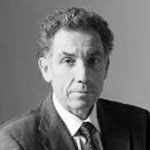
Meet Philippe Valenti
Shoulder 3T: Hello, Philippe Valenti, can you tell us about yourself?
Philippe Valenti : I was born in Paris, I am 60 years old.
I am an orthopaedic surgeon and I specialise exclusively in shoulder surgery.
S3T : Can you tell us about your career?
My career path is classic. I was an intern in the “hôpitaux de Paris” in 1981, then headed up a clinic for 4 years. I rapidly gravitated towards upper limb surgery, and in particular, reconstructive surgery.
With Professors MASQUELET and GILBERT as my mentors, I had to treat bone and cutaneous defects, as well as vascular and nerve lesions, which amounted to practicing microsurgery.
In 1991 I founded the Eastern Paris “Centre Privé SOS Main”, a clinic specialised in upper limb surgery and microsurgery. Three years later this clinic was one of the largest of its kind in Paris with 7-8 surgeons.
In 1987, during my time as Clinic Chief I wanted to perfect my skills in shoulder surgery and for the next two years I spent a day a week with Dr. Didier PATTE, founder of the “Société Européenne de Chirurgie de l’Epaule et du Coude”. I also spent time at the Mayo Clinic in the US.
In 1995, I joined the “Institut de la Main”, founded by Messrs TUBIANA and GILBERT. There, I began to specialise in shoulder disorders.
For the last 10 years, 90% of my activity has been focussed in this domain.
Having spent two years as an intern and house surgeon in paediatrics and orthopaedics, I continued paediatric orthopaedic upper limb surgery, and more specifically, surgery of the shoulder.
This is what led me in 1995, after a stint with Doctors Without Borders and Doctors of the World, to set up, with Alain DELOCHE and Eric CHEYSSON, “La Chaîne de l’Espoir” (The chain of hope), of which I am still Vice-President.
This humanitarian organisation strives to treat children who do not have access to care, in France and in thirty-odd countries around the world.
S3T : What does your day-to-day activity consist of?
PV : I currently work at the Bizet Clinic and three years ago I established, within the “Institut de la Main”, the “Institut Parisien de l’Epaule”, which currently boasts 4 surgeons. Every 6 months we train 3 surgeons destined to practice shoulder and elbow surgery.
At the Institute we treat the pathologies of the young athlete, the young and the athlete. We treat instability, fractures, cuff injuries and degenerative disorders such as arthritis, which most often require arthroplasty.
We carry out arthroscopy and arthroplasty in a 24h emergency service for the shoulder.
S3T : In your opinion, which recent innovation has had the greatest impact on shoulder surgery?
PV : In my opinion, the most important advance lies in the collaboration with industrial companies. This partnership has led to more efficient orthopaedic prosthetics and easier use of these materials.
Shoulder arthroscopy has advanced our knowledge of the shoulder joint and allowed us to develop less invasive and simpler procedures. Arthroplasty is constantly evolving thanks to pre-op planning software and ever more sophisticated instruments to carry out the procedures.
The aim of these innovations is to improve patient care and continue to give them better results.
Every two years, since 2013, with the late and sorely missed Philippe HARDY, we organise an international symposium on shoulder prosthetics. Next year, on the 14th-16th February, will be held the 4th edition; a forum where surgeons and prosthetic manufacturers can present their latest innovations. A perfect opportunity for practitioners to learn in order to better treat their patients.
S3T : What can you tell us about Shoulder3T?
With Eventime, I wanted to create an educational web site to share tips, tricks and techniques of shoulder surgery. This site offers free access to surgeons and is financed by orthopaedics companies.
VIMS guarantees the quality and diffusion of the content available on the site.
Surgeons logged on to Shoulder3T can follow a live surgery performed by a specialist and ask questions. The transmission can also be followed in replay.
I consider this to be an excellent teaching tool to help surgeons to specialise and develop their skills to the benefit of their patients.
S3T : Could you tell us more about the live transmission on the 24th October?
PV : The 24th October I will be performing a latissimus dorsi transfer for a massive postero superior cuff tear, which aims to reinforce the repair through arthroscopy.
The patient is 52 years old, a manual worker whose rotator cuff was first repaired 13 years ago in an open surgery; a repair which ruptured 5 years ago. The shoulder is causing severe pain; a certain degree of mobility is retained, but very little strength. Scans reveal a new rupture with atrophied muscles and severely retracted tendons, with nonetheless a functional subscapular muscle. The circumstances of this new rupture leads us to conclude that the tendon will be in a mediocre state and that a new repair will be difficult, which is why we will be reinforcing the repair with a latissimus dorsi transfer.
The live transmission of this operation will highlight both the latissimus dorsi technique and its attachment to the head of the humerus using arthroscopy.
During the debate we will concentrate on the methods of tendon transfer in the shoulder.
